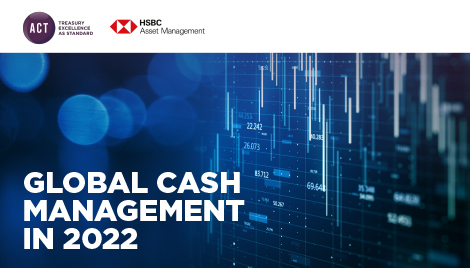Treasury Resources
Global Investment, cash and risk management best practices, innovations and strategies
The Global Guide to Investing Cash
This guide intends to help corporate treasurers to navigate the complexities of developing and implementing an investment policy, the factors that impact investment decision-making, and explains the different investment instruments available in various countries around the world.

An introduction to money market funds
A money market fund (MMF) can be broadly defined as an investment fund whose objective is to provide investors with security of capital and daily liquidity. It seeks to achieve that objective by investing in a diversified portfolio of high-quality, low-duration money market instruments. The return on a MMF tends to follow short-term interest rates with a low level of volatility.

Pressing the case for ESG in financial markets
The impetus for more sustainable cash investment solutions, such as ESG money market funds, continues to grow as treasury’s role in supporting a firm’s sustainability objectives becomes clearer. At a roundtable hosted by the Association of Corporate Treasurers and HSBC, treasurers discussed the practicalities and looked ahead at this developing market.

‘Treasurers have important role in journey to net zero’
If any treasurer required evidence that environmental, social and governance issues should be firmly on their agenda, it came at the recent ACT Treasury Forum,
hosted in alliance with HSBC.

Webinar: Navigating counterparty challenges – dynamic credit risk management
In today’s dynamic financial landscape, being well prepared and adaptable is essential for safeguarding your organisation’s financial stability This webinar is essential viewing for treasurers, financial

Building the foundations for investment management: The governance framework
Definition, institutionalisation and management of a well-grounded governance framework to guide the organisation’s cash management programme, promoting a consistent, proportional, long-term, decision-making discipline across the organisation, to guide through dynamic market conditions.

The benefits of a coherent and consistent approach: Risk framework and treasury policy
Defining the risk management framework for treasury operations to frame the organisation’s risk appetite and thereby setting a coherent road map to identify, control, manage and report subsequent risk responses.

Fundamentals of investment management: Design of the investment policy
The investment policy provides the strategic guidance for treasurers to navigate the dynamics of cash and the investment ecosystem. Only by ensuring that all the stakeholders are working to the same objectives and guidelines can the company successfully manage its cash investments.

Getting ahead of the curve: Cash management
Cash management processes have seen rapid changes and innovations to improve accuracy and satisfy the growing requirements of stakeholders Only by means of effective cash optimisation and subsequent visibility into short-, medium- and long-term cash requirements can treasurers identify and effectively manage their investments.

Effective cash positioning: Cash management tools and techniques
Cash management requirements have heightened to enable continuous and accurate cash position reporting, responsive forecasting and efficient handling of payments, as well as managing and evaluating financial risks with greater precision. This section reviews the efficient cash management structure, centralise payments and concentrate cash to generate additional liquidity and optimise interest.








